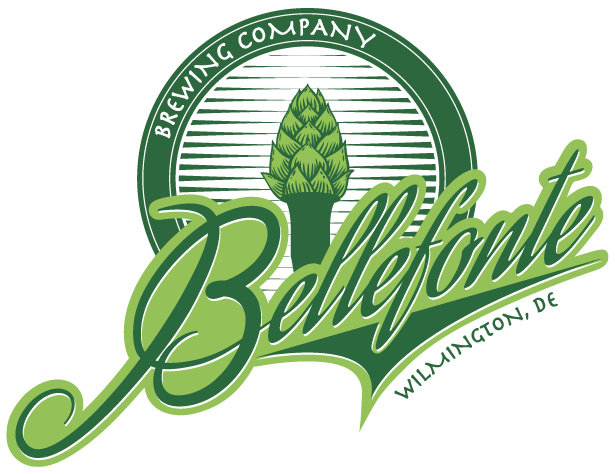Pucker Up
Sour beers are a growing presence on the brewing landscape.
Lore has it that thousands of years ago, when humans first discovered that hops, grain and water combined to create beer, all the resulting beverages featured a taste profile that we would describe as sour.
Blame the microorganisms that linger around us—then and now. Bacteria and naturally occurring yeasts were in the air, water and dust, and especially in the open vessels often used to craft the early brews. They settled freely in the wort (the grain and water mixture that forms the beginnings of beer) and thrived.
Once Louis Pasteur demonstrated how to rid food and prep equipment of unwanted microorganisms using his namesake process and simple sterilization, brewers learned the importance of making sure the final product was free of unwanted microbial visitors. Open wooden vessels gave way to closed, easily cleaned copper kettles and eventually, stainless steel vats. Paired with high-temperature cleaning, the simple changes all but eliminated the potential of unwanted critters infesting a batch of beer.
The disappearance of sour beers from the American landscape also had a good bit to do with changes in approaches to food storage, as well as a healthy dose of big-business marketing, says CEO and co-owner of Bellefonte Brewing Co. in Wilmington.
“Brewing in America has been in an awakening almost since Prohibition. Everything changed after that period of self-isolation. Sour beers almost immediately made a comeback right after that,” he says. “But along with the whole concept of canned foods and long-term shelf-stable products, there was an attempt to run the old-style beers off. Either that or they just faded away.”
Because nothing is as alluring as the forbidden or unattainable, modern brewers began to plumb history for those funky flavors lost through modern cleanliness. However skeevy it might sound, in pursuit of this primordial flavor born from higher acidity, modern beer makers began intentionally infecting their brews with several types of bacteria and wild yeasts, all designed to add a little something to bring about that new/old sour flavor only the wonkiest beer enthusiasts and culinary anthropologist even knew we were missing.
The master brewers of Belgium were the first in recent history to bring these flavors back to commercially produced brews, going back to the old open koelschip—the Germanic name for what Americans refer to as the coolship, or an open vessel used to cool wort. This allowed “wild” yeasts and bacteria to settle into the mix before it moved to the brewing process.
They began offering up their intentionally inoculated and fermented sour ales known as lambics, as well as lambic blends (known as gueuzes) and Flanders ales. Others not of Belgian provenance included Berliner weisse and gose, both from Germany. Goosed with naturally occurring flora in the wort stage, the finished brews were often aged in used wine barrels, where other lingering bacteria and the remnants of each vintage would boost the flavor profile further.
Properly prepared, these beers can range from light and fruity to verging on the complexity of a fine, dry red wine and lend themselves to a variety of food pairings. In fact, he says that among traditional craft brew drinkers who lean toward a hoppy flavor, sours can often fall flat. But with wine drinkers who often claim to not like beer, sours are frequently a hit.
“The mouth feel of the product is going to be the same as wine, so I use that as my reference point for people who say, “I don’t really like beer,’” he says. “Ten to 15 times over the course of every weekend we see the beer person turn up their nose and someone who doesn’t like beer will go to the sours. It can really take people 180 degrees out of where they thought they were.”
Done wrong, the taste of a sour beer can skew toward the unpleasantly earthy or even, um … poopy. Because of their brewing process, even when done well, consistency isn’t the hallmark of sour beers. If you find a brand you like and stick with it, you can still expect flavor variations from batch to batch, he says.
“Sours are kind of hit and miss, but they’re becoming more ‘hit.’ In my drinking experience, I’ve been punished by a number of sours,” he notes. “It’s been kind of an adventure in discovery. It doesn’t always go your way, but it’s always entertaining.”
Sours available at Bellefonte this month will be the Sour Claymonster, a sour Belgian quadruple (or “quad” – essentially an extra-strong Trappist-style ale) with flavors of tart cherry and caramel; a mixed fermentation with Brettanomyces bruxellensis (“Brett brux”) and Saccharomyces Trois (“Sacc. Trois”) yeasts that the brewer describes as “a big, bright. pineapple bomb”; Bellefonte’s second batch of Solera #1, a complex sour with a wine-like flavor that, with carbonation, comes off like a prosecco; and a bright and complex full Brett fermentation that features strong flavors of sour peach and mango. He says he also likes to keep at least two sours on tap throughout the year, usually a blueberry and raspberry.
To read the original article, click here!


